In this article, we present you with an inspiring array of 23 big houseplants that will redefine the ambiance of your space. Imagine towering palms gracefully swaying in the breeze, vibrant and leafy monsters making a bold statement or elegant fiddle leaf figs adding a touch of sophistication.
These living sculptures purify the air and serve as captivating focal points, enhancing your décor with their unique shapes, textures, and colors. Whether you seek a statement piece to anchor your design or a collection of complementary plants, this compilation offers a diverse selection to suit every style and preference.
Join us on this botanical journey and uncover the transformative power of these 23 big houseplants, as they breathe life, beauty, and vitality into your living room, making it a sanctuary you’ll never want to leave.
#1. Fiddle Leaf Fig (Ficus Lyrata)
This is a popular houseplant known for its large, glossy leaves that resemble the shape of a fiddle or violin. This tropical plant is native to western Africa and has become a favorite choice for indoor plant enthusiasts due to its striking appearance.
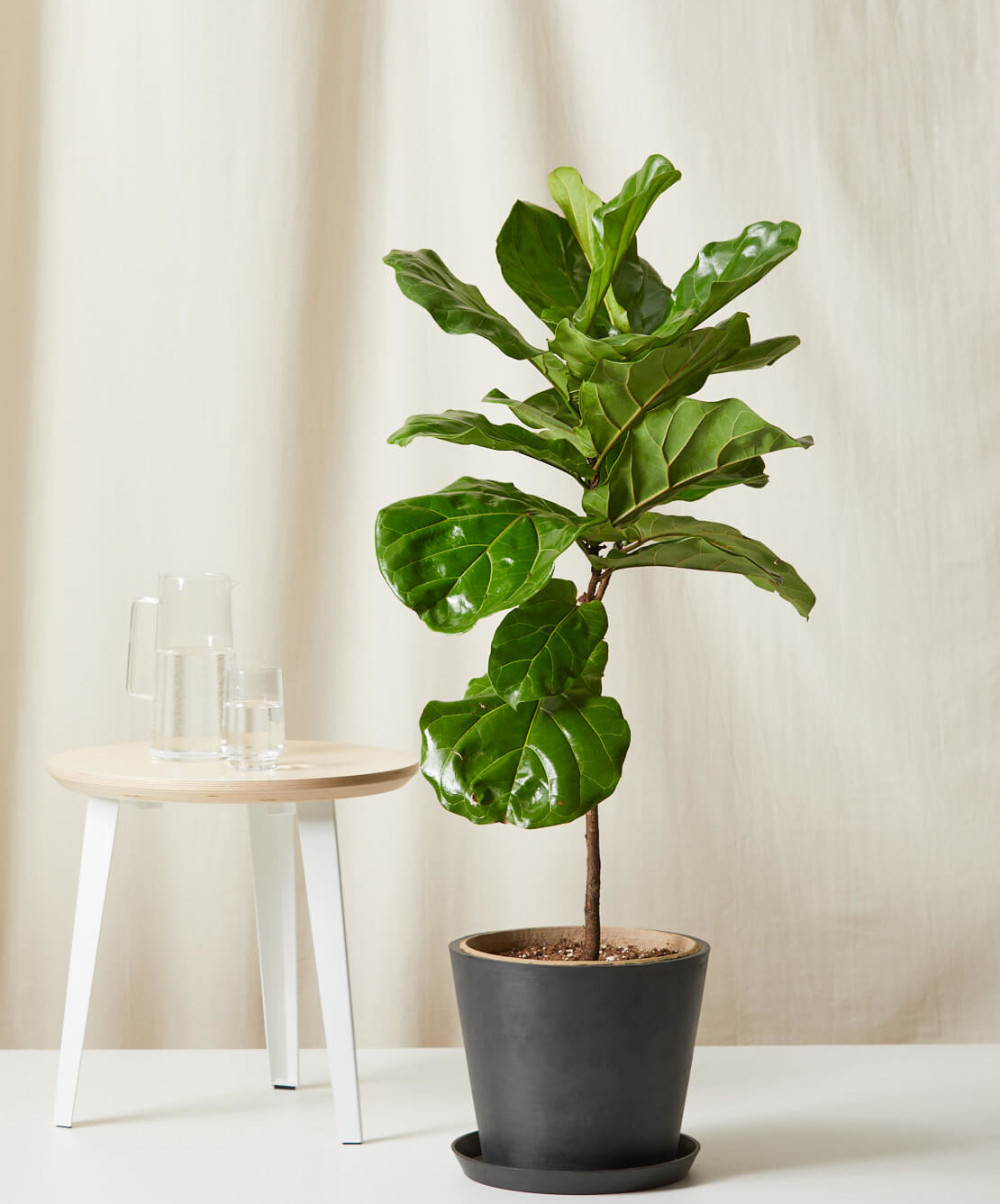 Source: Bloomscape
Source: Bloomscape
They are primarily used as ornamental houseplants. Their lush foliage and unique leaves make them an attractive addition to homes, offices, and other indoor spaces. They can be placed in living rooms, bedrooms, hallways, and even large offices to add a touch of greenery and elegance to the decor.
#2. Swiss Cheese Plant (Monstera Deliciosa)
They are commonly used as ornamental houseplants. Their lush and dramatic foliage adds a tropical and exotic feel to interior spaces. They can be placed in living rooms, bedrooms, offices, and other indoor areas to enhance the decor.
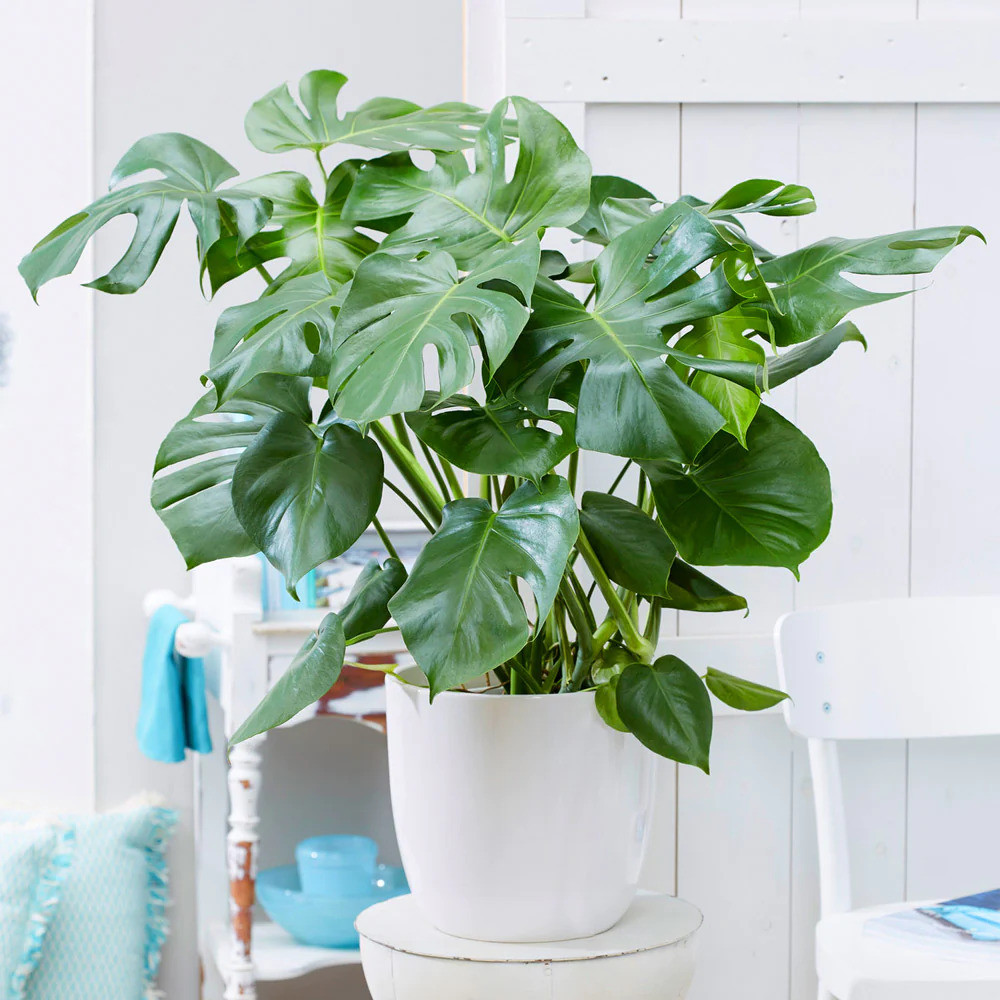 Source: Brighter Blooms
Source: Brighter Blooms
Like many indoor plants, they can help improve indoor air quality by removing toxins and releasing oxygen into the air, which contributes to a healthier living environment.
#3. Bird of Paradise (Strelitzia Reginae)
This plant, scientifically known as Strelitzia reginae, is a striking and exotic tropical plant native to South Africa. It is renowned for its unique and distinctive appearance, which resembles a bird’s plumage and a bird in flight, giving it the common name “Bird of Paradise.”
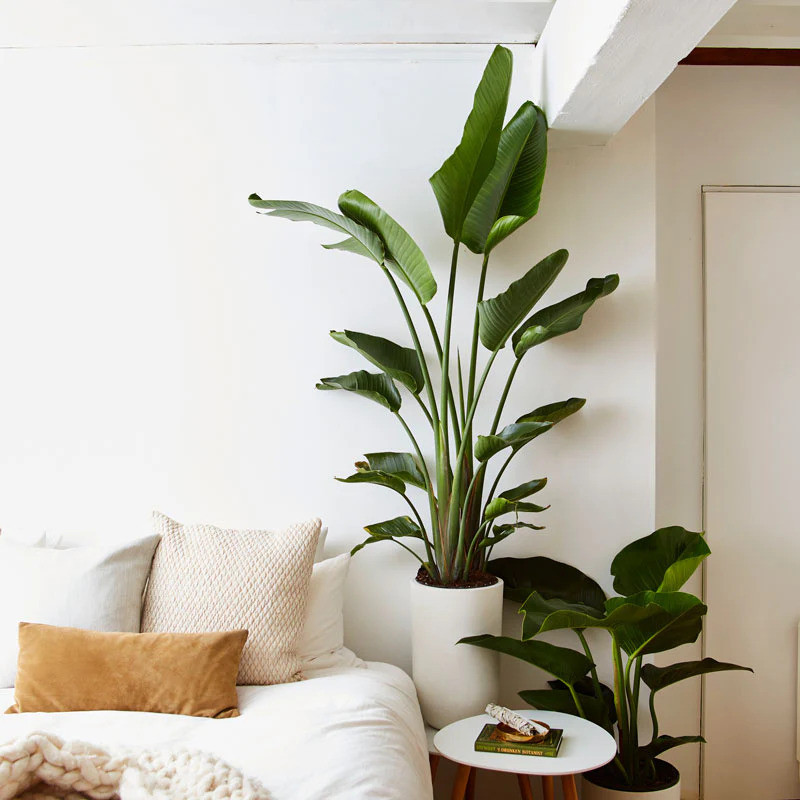 Source: Greenery Unlimited
Source: Greenery Unlimited
When caring for a Bird of Paradise plant, it’s important to provide it with the right conditions, including bright, indirect sunlight, well-draining soil, and occasional pruning to remove dead or damaged leaves. It’s also important to keep in mind that while it can adapt to different conditions, it may not flower indoors as readily as it would in its natural habitat.
#4. Rubber Plant (Ficus Elastica)
It features large, dark green, and glossy leaves that are typically oval or elliptical in shape. These leaves are thick and rubbery in texture, giving the plant its common name. The plant can grow into a small tree-like structure when mature.
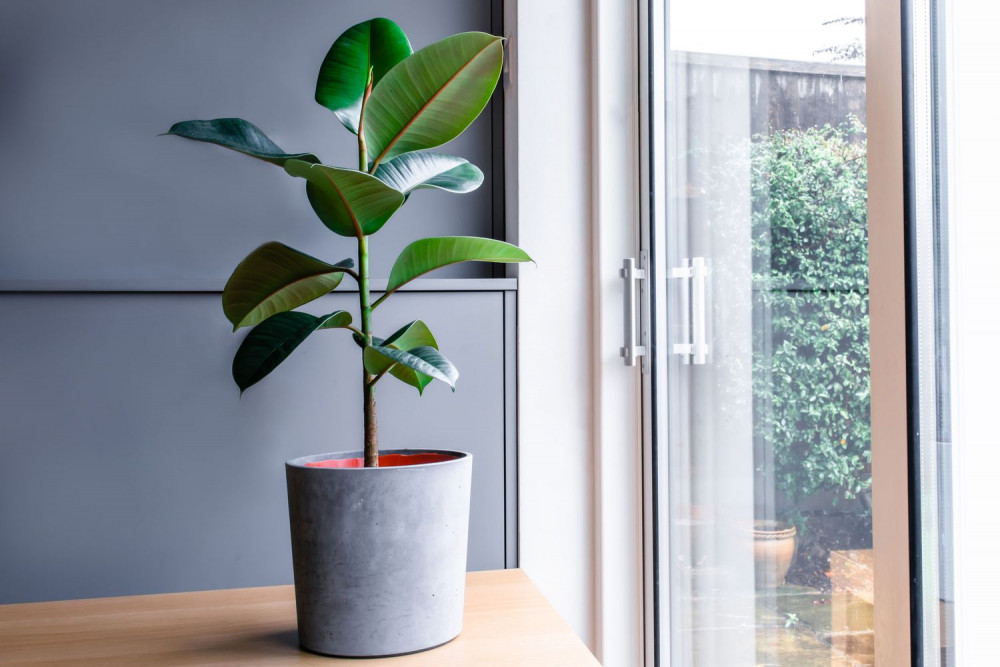 Source: The Spruce
Source: The Spruce
Here are some common uses and benefits of the plant: indoor decoration, air purification, natural room divider, wellness, natural decor element, low-maintenance greenery, outdoor accent, habitat for wildlife, and office spaces
#5. Parlor Palm (Chamaedorea Elegans)
This is a popular indoor palm plant appreciated for its elegant appearance and ease of care.
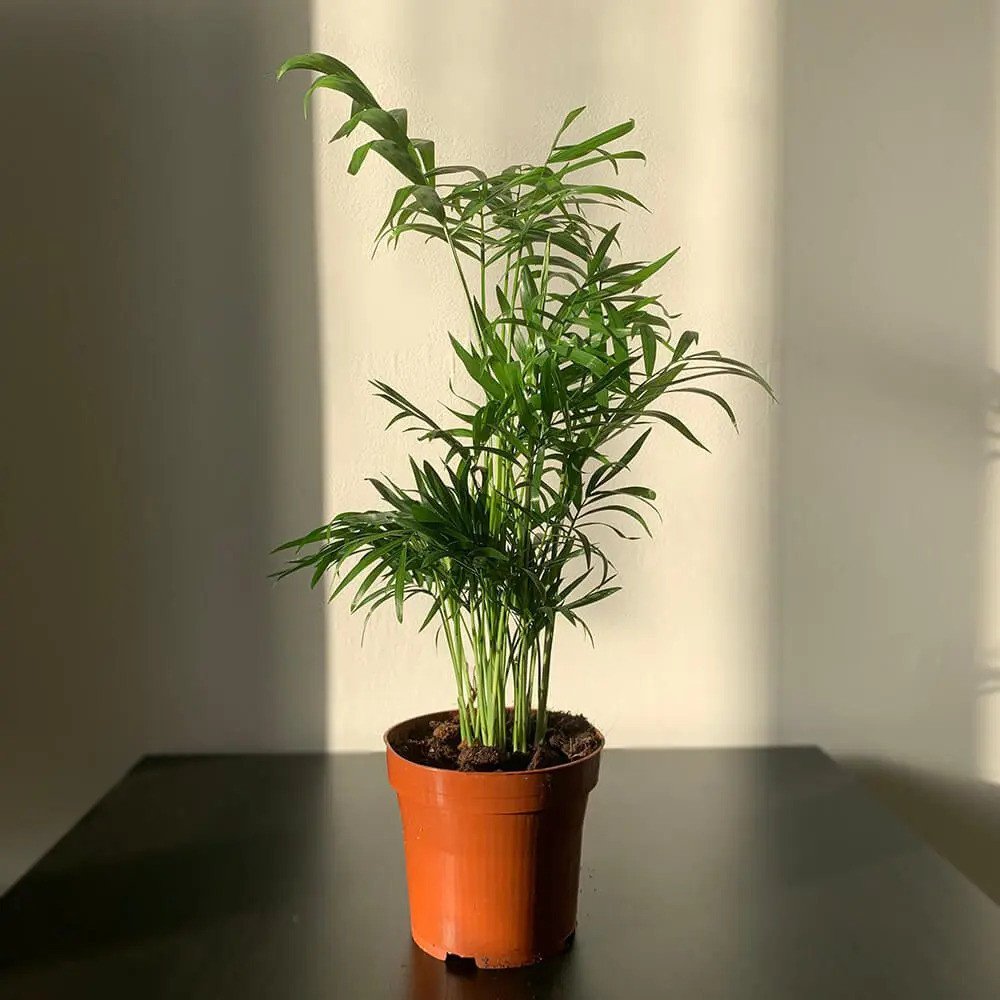 Source: Leafy Life
Source: Leafy Life
It can thrive in various indoor environments. Its attractive appearance, air-purifying qualities, and low-maintenance nature make it a popular choice for both beginner and experienced plant enthusiasts looking to add a touch of greenery to their homes or offices.
#6. Weeping Fig (Ficus Benjamina)
They are characterized by their elegant appearance, with slender, drooping branches and glossy, lance-shaped leaves. The leaves are typically dark green, but there are variegated varieties with white or yellow edges.
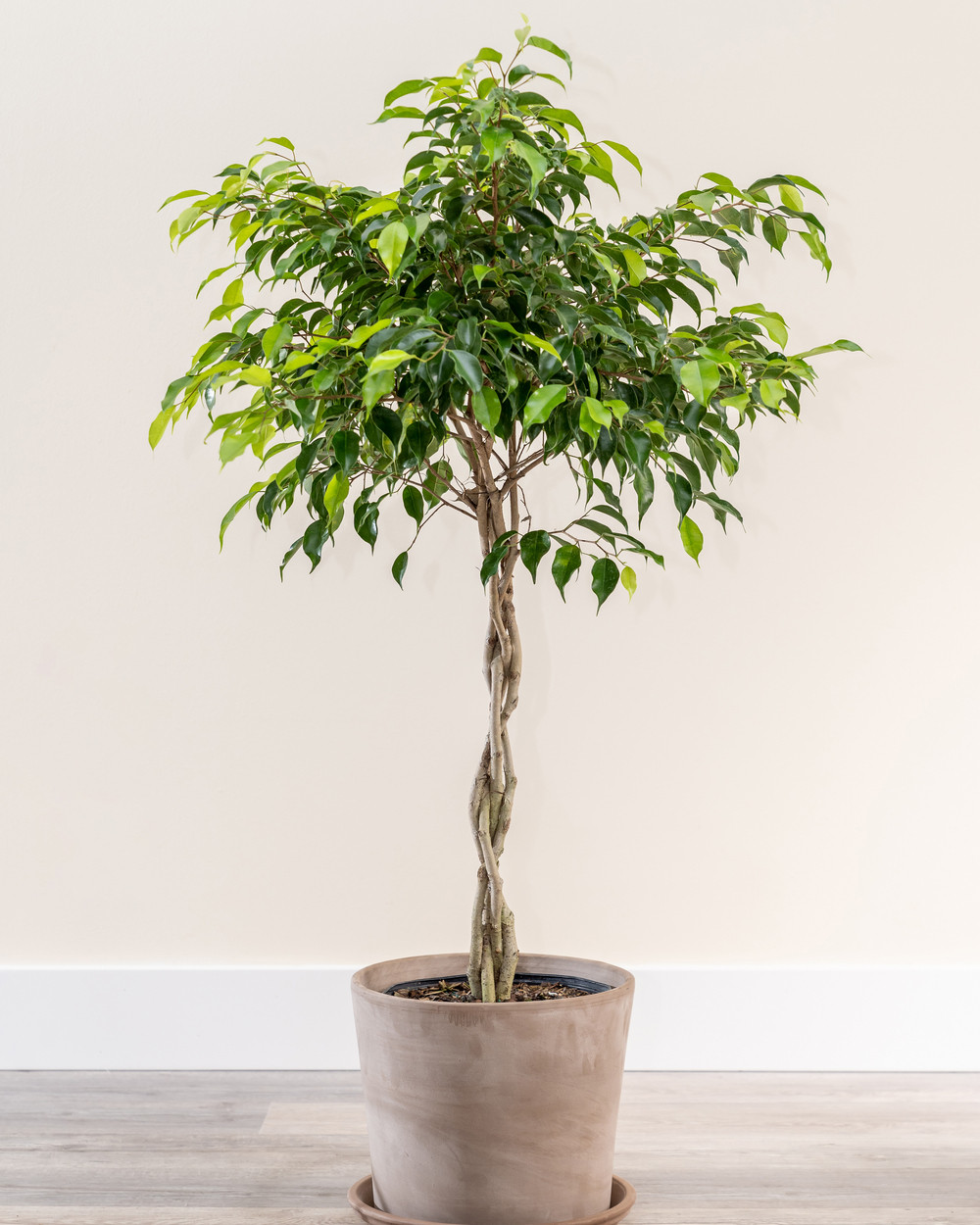 Source: PlantVine
Source: PlantVine
They can grow to varying heights, ranging from a few feet to several feet tall, depending on their care and environment. They can be pruned to maintain a specific size and shape.
This plant is primarily grown as an indoor houseplant and is a favorite choice for homes and offices. They thrive in bright, indirect sunlight but can adapt to lower light conditions, although they may lose some leaves in lower light.
#7. Split-Leaf Philodendron (Monstera Adansonii)
This plant is recognized by its large, split, or fenestrated leaves with unique oblong holes and splits in the foliage. This gives it a distinctive and exotic appearance.
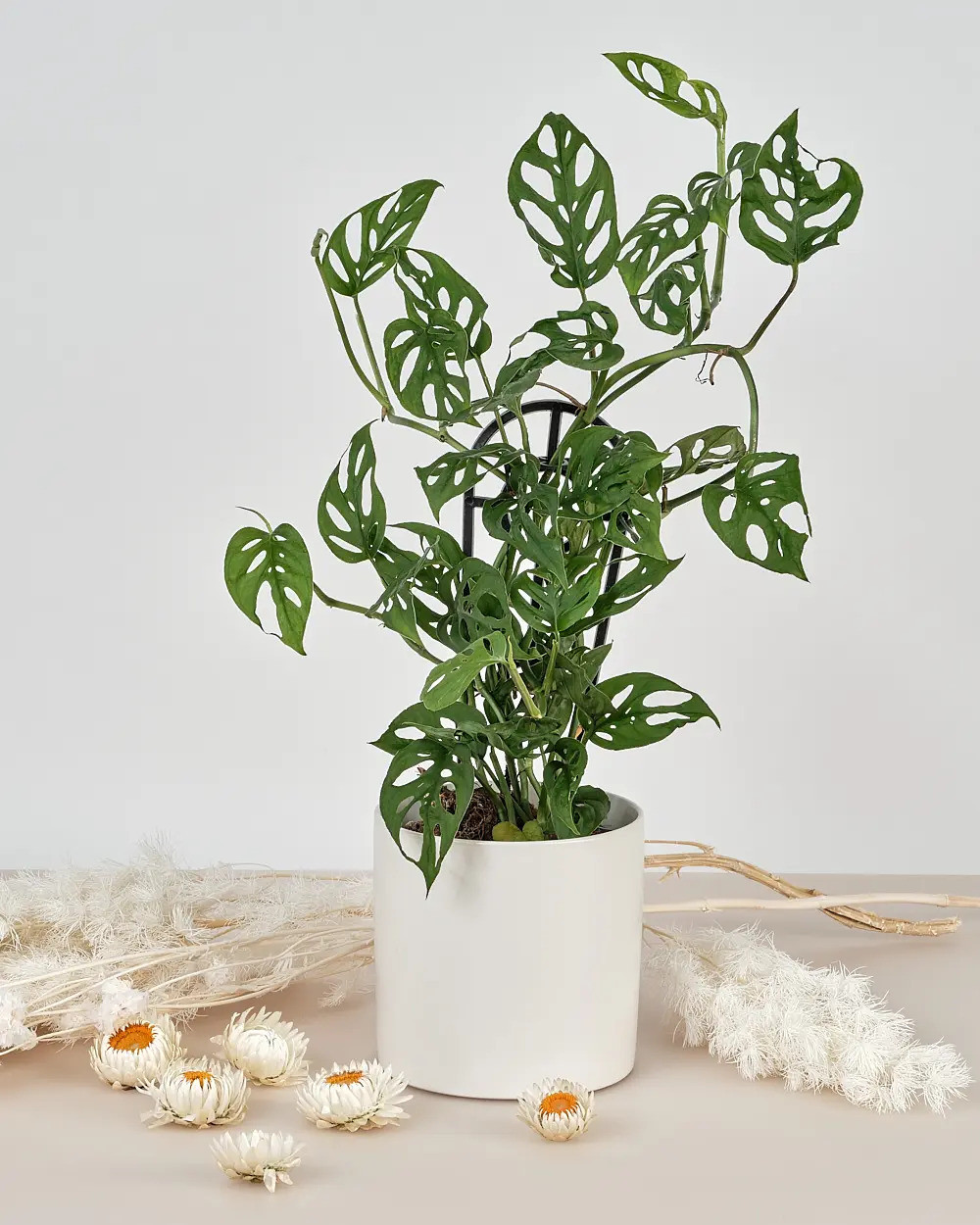 Source: Fig & Bloom
Source: Fig & Bloom
They can grow quite large, with leaves that can reach up to 2 feet (60 cm) or more in diameter. They can also develop long, trailing vines as they mature.
They are relatively low-maintenance. They require regular but moderate watering, allowing the top inch or two of soil to dry out between waterings. Overwatering can lead to root rot.
#8. Dragon Tree (Dracaena Marginata)
This is a unique and distinctive tree native to the Canary Islands. It’s known for its thick, grayish trunk that often takes on a unique, twisted shape. The leaves of the Dragon Tree are long, narrow, and green, forming a rosette at the top of the trunk. This tree is often grown as an ornamental plant in gardens and as a houseplant in many parts of the world.
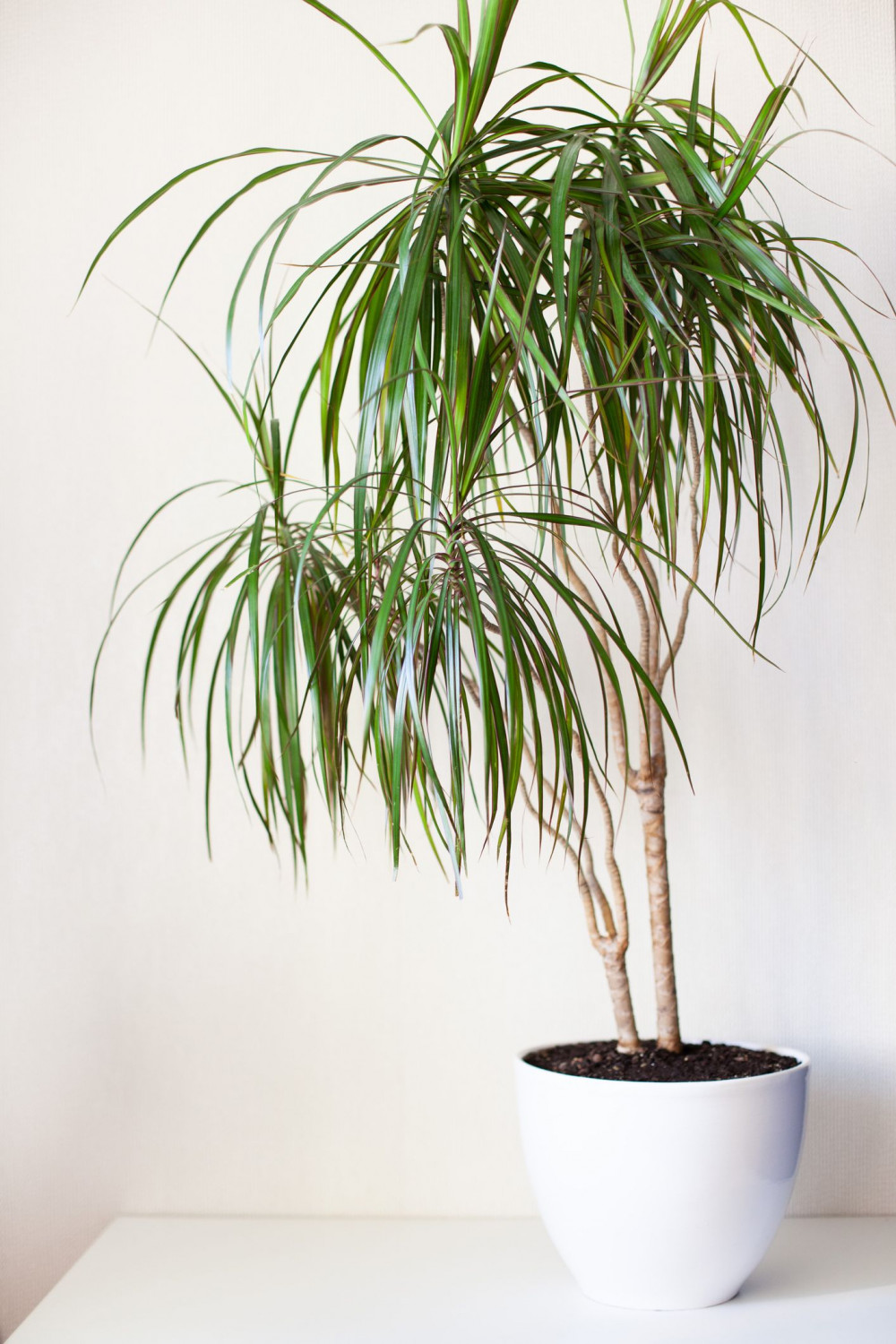 Source: House Beautiful
Source: House Beautiful
It is a visually striking and relatively easy-to-care-for plant that can add a touch of elegance and drama to both indoor and outdoor settings. Its sculptural form and air-purifying qualities make it a popular choice among plant enthusiasts and interior designers alike.
#9. Corn Plant (Dracaena Fragrans)
This plant has long, arching leaves that are green with yellow or white stripes running down the center, resembling corn leaves, which gives it its common name. The leaves are lance-shadped and can grow quite large.
 Source: PlantVine
Source: PlantVine
They are commonly grown as indoor houseplants. They are well-suited for homes and offices due to their adaptability to indoor conditions.
#10. Yucca (Yucca Elephantipes)
This is a genus of perennial plants known for their distinctive, sword-shaped leaves and often dramatic, architectural appearance. There are various species of Yucca, and some are popular as ornamental plants or used for their edible parts.
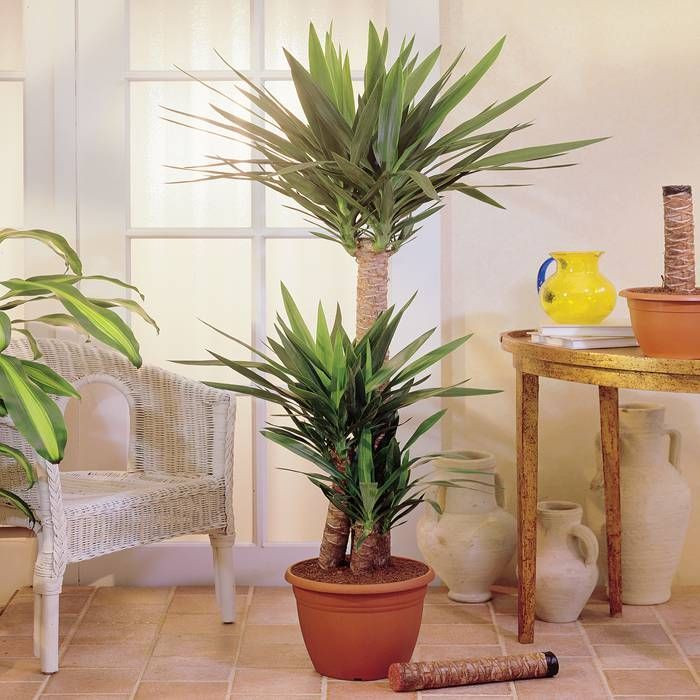 Source: Gardens4You
Source: Gardens4You
They are known for their low maintenance requirements. They are highly drought-tolerant and can thrive in hot, dry conditions. They prefer well-draining soil and full sun.
#11. Areca Palm (Dypsis Lutescens)
It has long, narrow, feathery fronds that resemble the shape of butterfly wings. The fronds are typically deep green and may have light green or yellow streaks on the surface. The plant has a straight trunk, and the dense fronds create a lush and vibrant appearance.
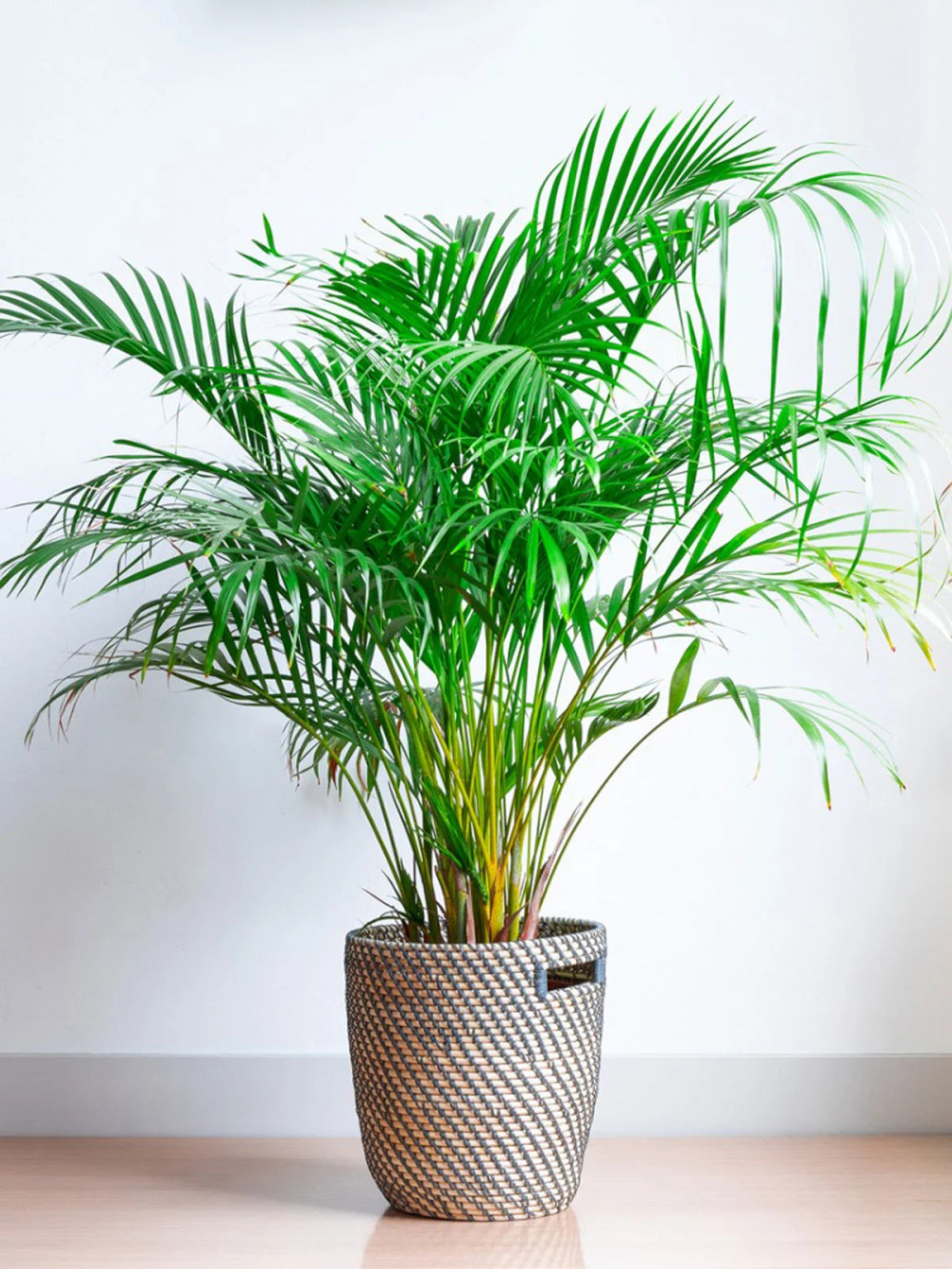 Source: Gardening Know How
Source: Gardening Know How
It is a beautiful and air-purifying houseplant that can enhance the aesthetics of your indoor space while also contributing to a healthier environment. Its graceful fronds and adaptability to indoor conditions make it a favorite among plant enthusiasts and interior designers.
#12. Majesty Palm (Ravenea Rivularis)
This plant prefers warm temperatures and relatively high humidity levels. They thrive in a temperature range of 65 to 80 degrees Fahrenheit (18 to 27 degrees Celsius). Increase humidity by misting the leaves or placing a tray of water near the plant.
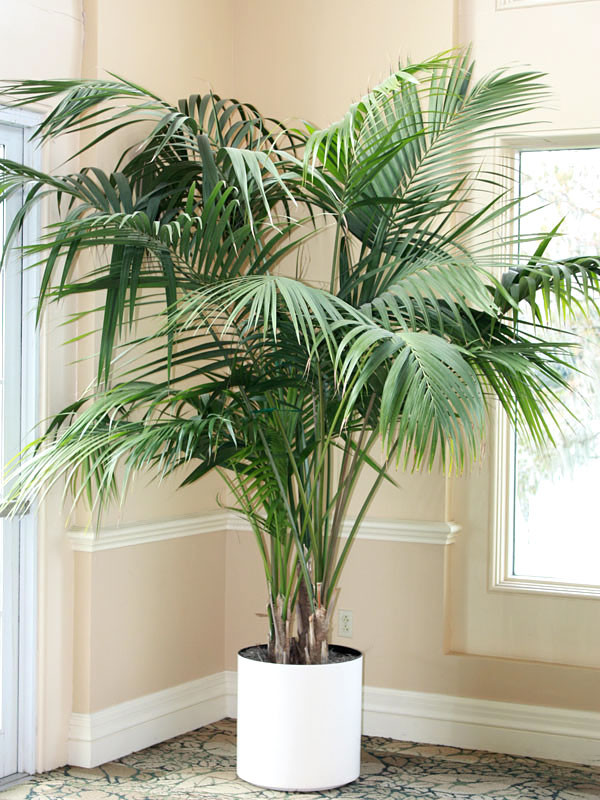 Source: Urban Palms
Source: Urban Palms
It also prefers bright to indirect light but should avoid direct sunlight, especially harsh, direct sunlight that can scorch the plant’s leaves.
#13. Snake Plant (Sansevieria Trifasciata)
They are one of the easiest indoor plants to care for. They thrive in low to bright indirect light and can tolerate low-light conditions. They are drought-tolerant and prefer to dry out between waterings, making them a great choice for forgetful waterers. Overwatering is one of the few ways you can harm a Snake Plant. These plants also benefit from occasional fertilization, but they can survive without it for extended periods.
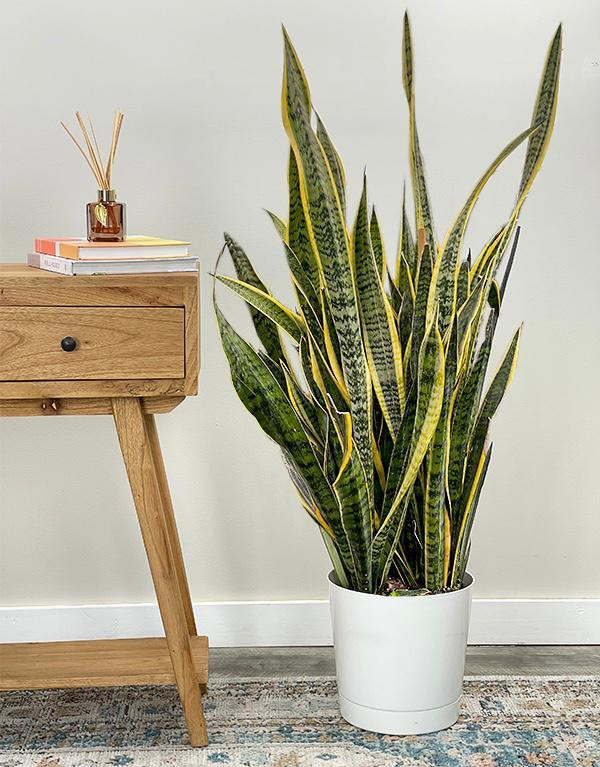 Source: PlantVine
Source: PlantVine
This plant has long, upright, sword-like leaves that are typically green with various patterns of yellow or silver striping. The leaves can grow up to several feet in height, depending on the variety.
#14. Chinese Evergreen (Aglaonema)
This is a versatile and visually appealing indoor plant that is well-suited for both novice and experienced plant enthusiasts. Its adaptability to low-light environments and low-maintenance requirements make it a favorite choice for indoor decoration.
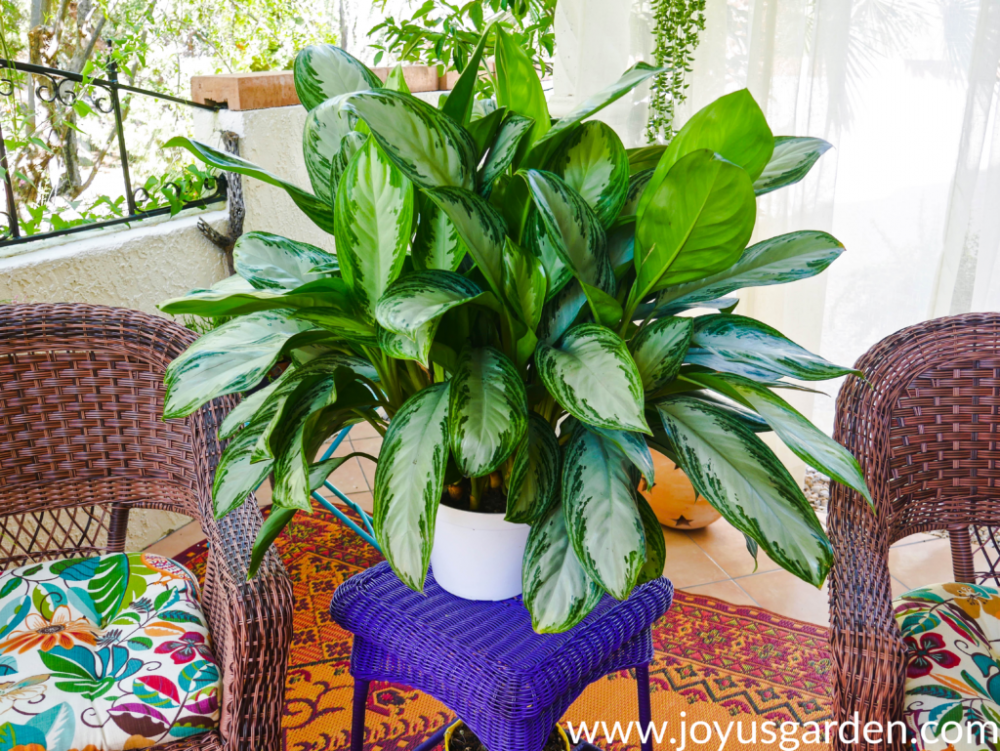 Source: Codai.net
Source: Codai.net
These plants are known for their ability to tolerate low-light conditions, making them ideal for spaces with indirect or filtered sunlight. They can also adapt to brighter environments, but direct sunlight should be avoided as it can scorch the leaves.
#15. Philodendron Selloum (Philodendron Bipinnatifidum)
This is characterized by its large, leathery, deeply lobed leaves that can grow up to 2-3 feet in length. The leaves have a glossy, dark green color and a unique, tropical appearance.
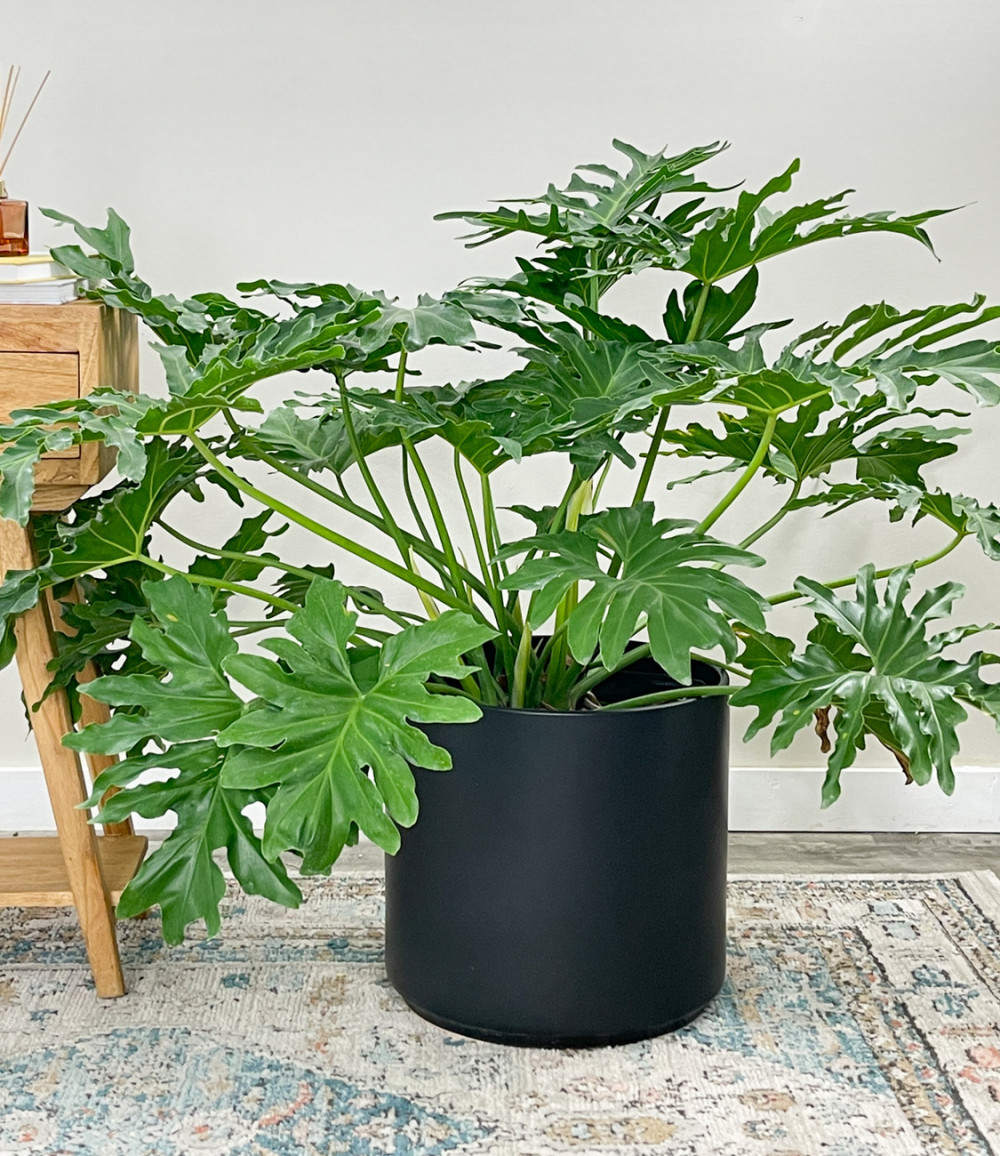 Source: PlantVine
Source: PlantVine
It is a popular tropical houseplant valued for its attractive, deeply lobed leaves. These plants can reach considerable sizes, with mature specimens forming a bushy, shrub-like appearance. The overall size can vary depending on the growing conditions.
#16. Pothos (Epipremnum Aureum)
This species has heart-shaped, deep green leaves with white or yellow variegation. Their leaves are soft and can grow quite long. They are often grown in hanging baskets or allowed to trail on supports.
 Source: UKHouseplants
Source: UKHouseplants
It is often used for decorative purposes in homes and offices due to its attractive foliage and trailing habit. It can be placed on shelves, in hanging baskets, or on tall plant stands. It is easy to propagate through stem cuttings. Simply cut a healthy stem with several leaves and root it in water or soil.
#17. Alocasia (Alocasia Spp.)
The plants are known for their bold and impressive foliage, making them a favorite among plant enthusiasts who appreciate unique and eye-catching indoor greenery. However, they can be a bit more challenging to care for compared to some other houseplants, primarily due to their specific light and humidity requirements.
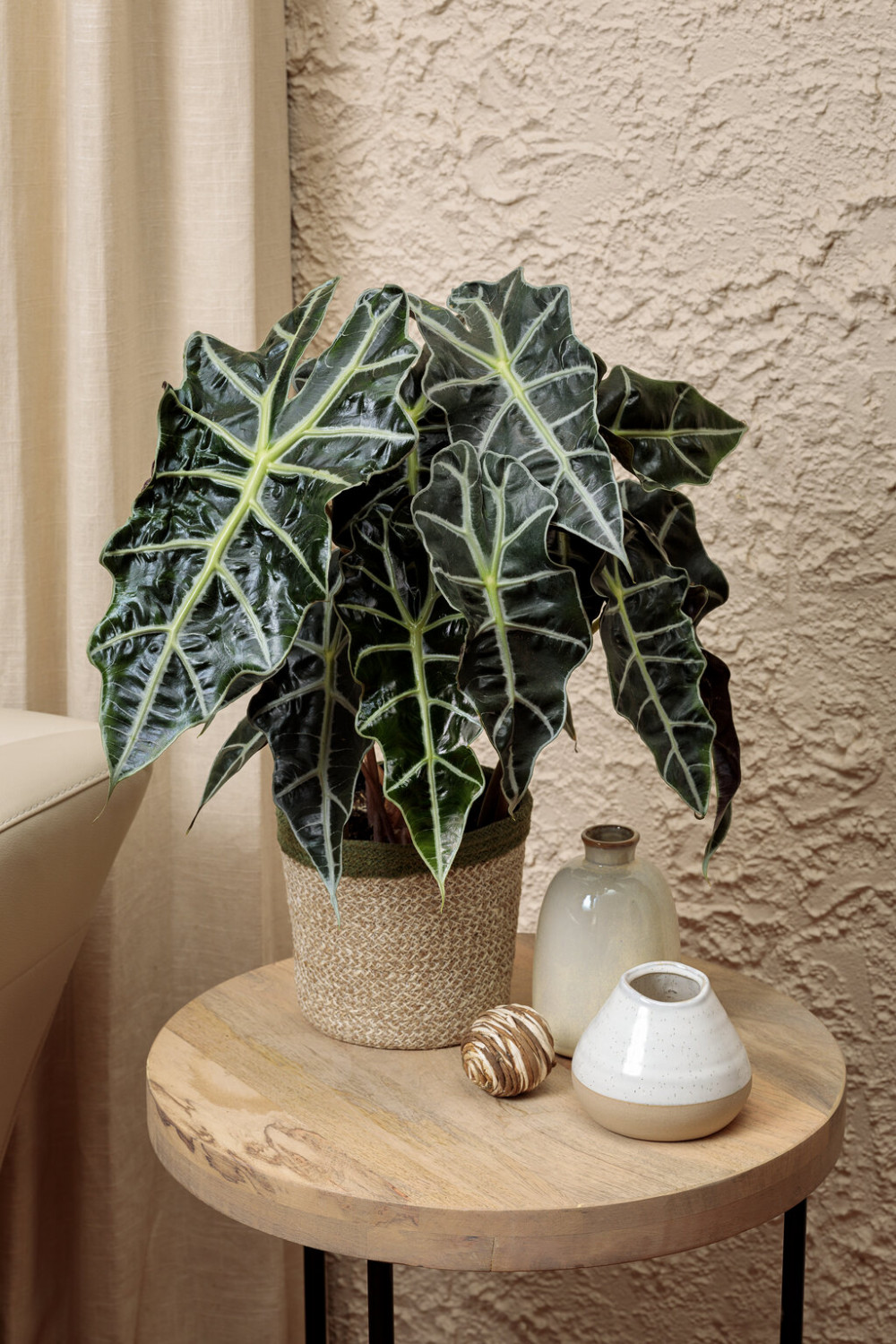 Source: Proven Winners
Source: Proven Winners
They prefer bright, indirect light. They can tolerate some morning or evening sun, but direct midday sunlight can scorch their leaves. Inadequate light may result in reduced growth and smaller leaves.
#18. Boston Fern (Nephrolepis Exaltata)
Due to their graceful and airy appearance, they are commonly used for decorative purposes in homes, offices, and indoor gardens.
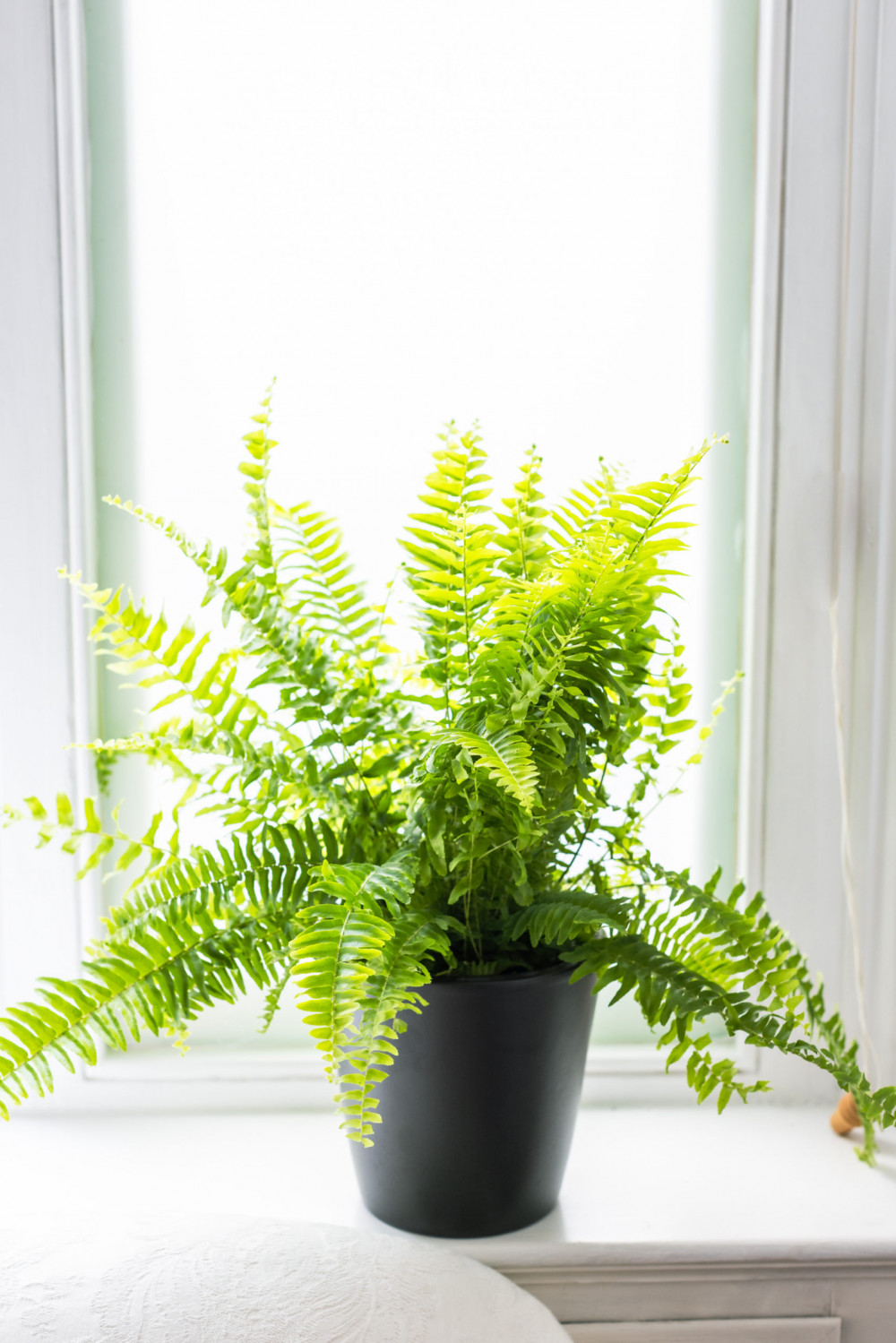 Source: Flowers by Flourish
Source: Flowers by Flourish
Like many indoor plants, they can help improve indoor air quality by removing pollutants and adding oxygen to the environment.
#19. Peace Lily (Spathiphyllum Spp.)
They have glossy, dark green leaves with a distinct shape. They are known for their striking white, spoon-shaped, hood-like flowers (spathes) that rise above the foliage.
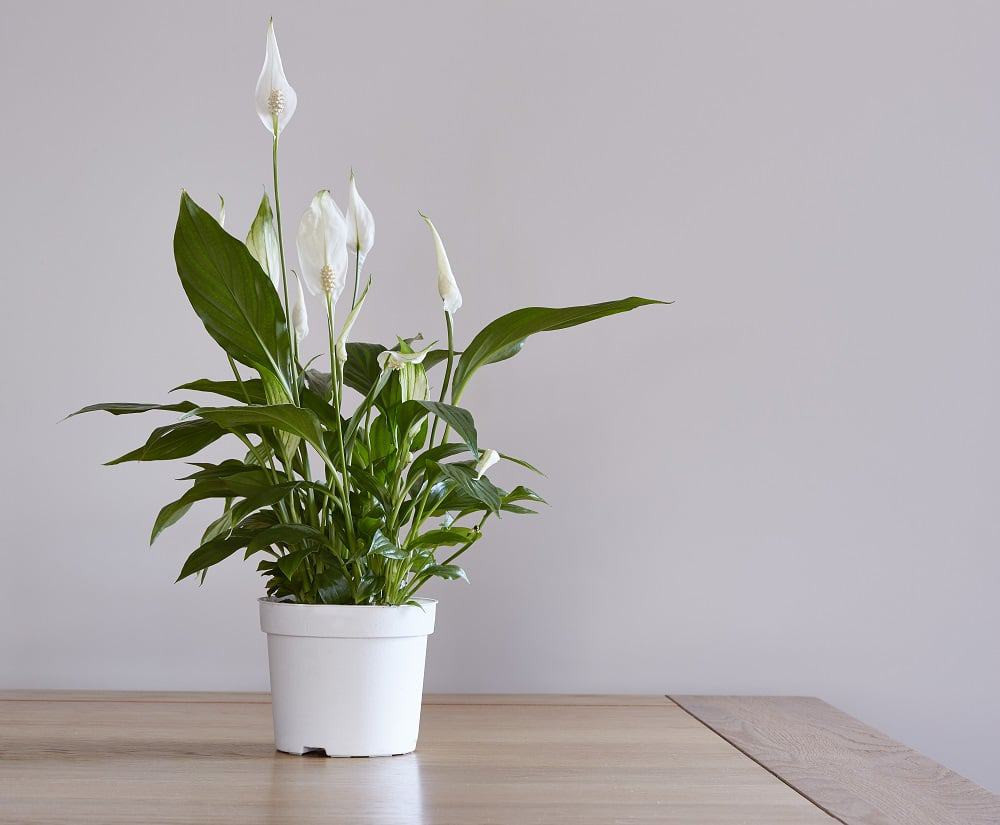 Source: Houseplant Central
Source: Houseplant Central
They can vary, but they typically reach a height of 1 to 4 feet when grown indoors, making them suitable for tabletops, shelves, or floor displays.
#20. Monstera Deliciosa ‘Borsigiana’ (Smaller Version Of Monstera)
It thrives in bright, indirect light, well-draining soil, and regular watering. It’s important to allow the top inch or two of soil to dry out between waterings. Additionally, Monstera plants are known for their aerial roots, which can be trained to climb or simply left to dangle.
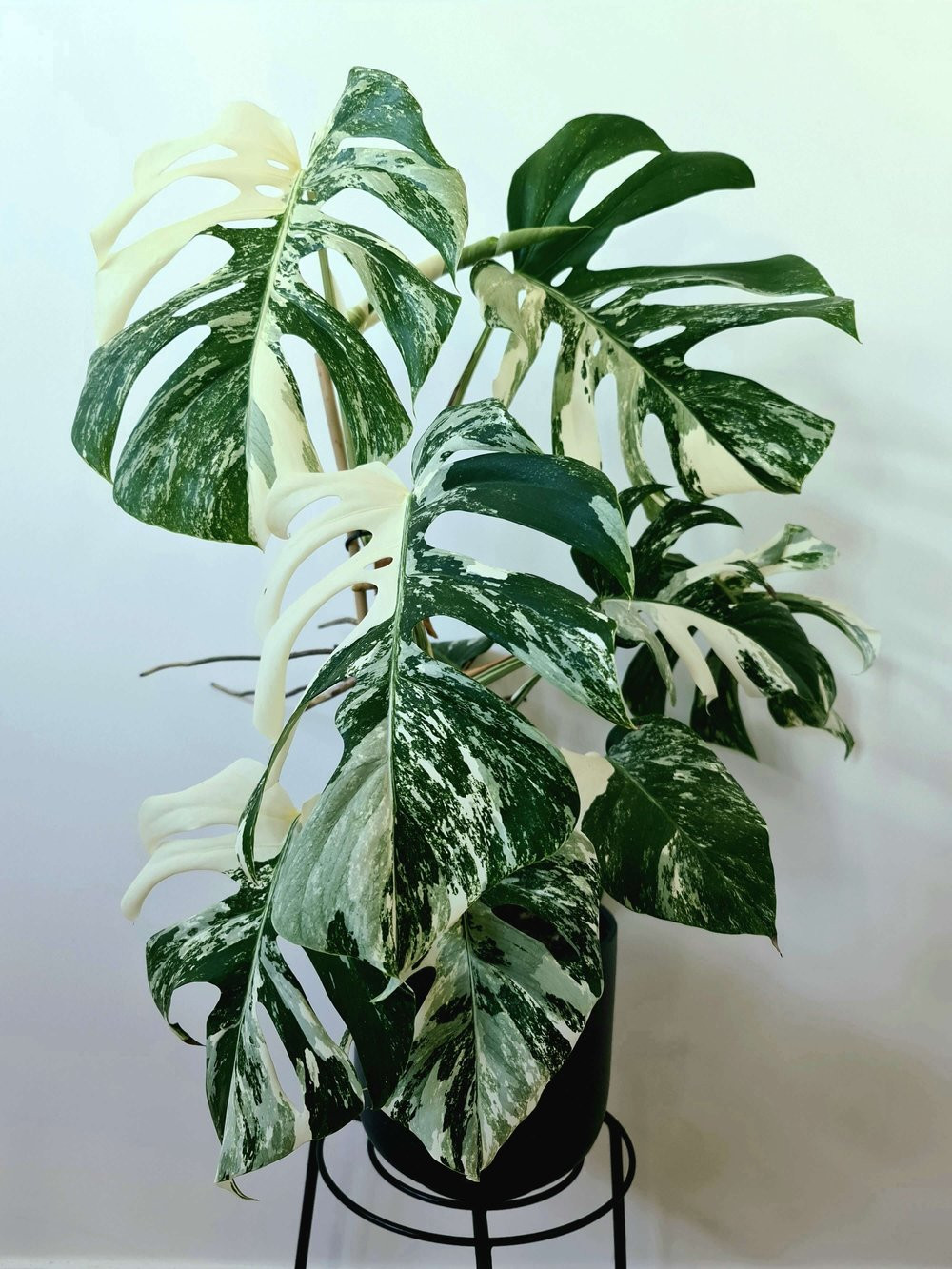 Source: Verdant Dwellings
Source: Verdant Dwellings
This is a popular plant in the Araceae family. It is characterized by its large, dark green, and notably irregularly shaped leaves with holes in them as it matures, which is the source of its nickname “Swiss Cheese Plant.”
#21. ZZ Plant (Zamioculcas Zamiifolia)
The plants have thick, fleshy stems and glossy, dark green leaves. The individual leaflets are shiny and resemble the shape of a feather or a feather-like pinna. The plant’s growth habit is upright and bushy.
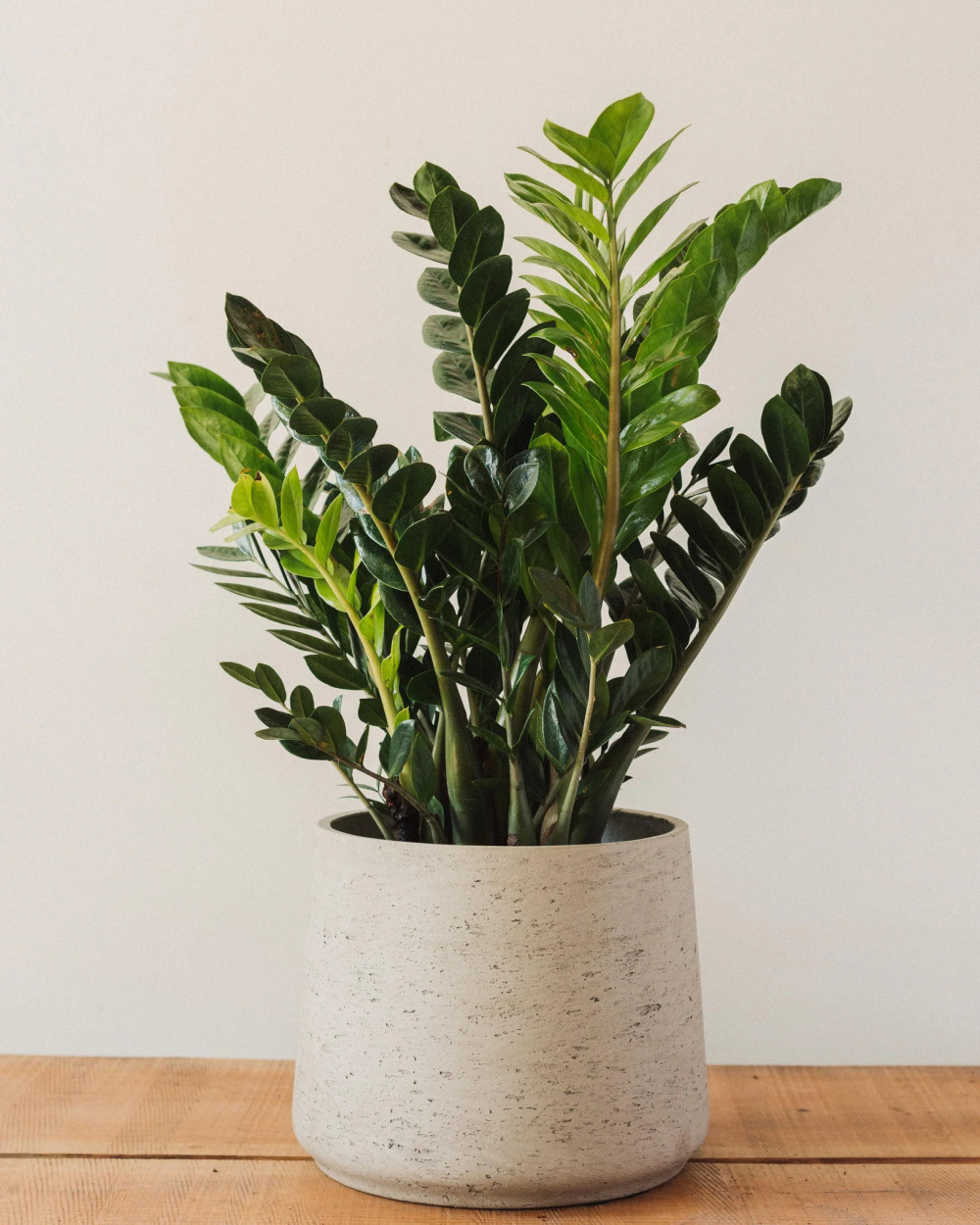 Source: Glasswing Shop
Source: Glasswing Shop
They are primarily grown as indoor houseplants. They are favored for their ability to thrive in low-light conditions and tolerate neglect.
#22. Fishtail Palm (Caryota Mitis)
The most distinctive feature of them is their bi-pinnate leaves, which resemble the tails of fish and give the palm its name. Each leaf is divided into numerous smaller leaflets, giving it a frilly and intricate appearance. The leaves can be quite large and grow in a cluster at the top of the palm trunk.
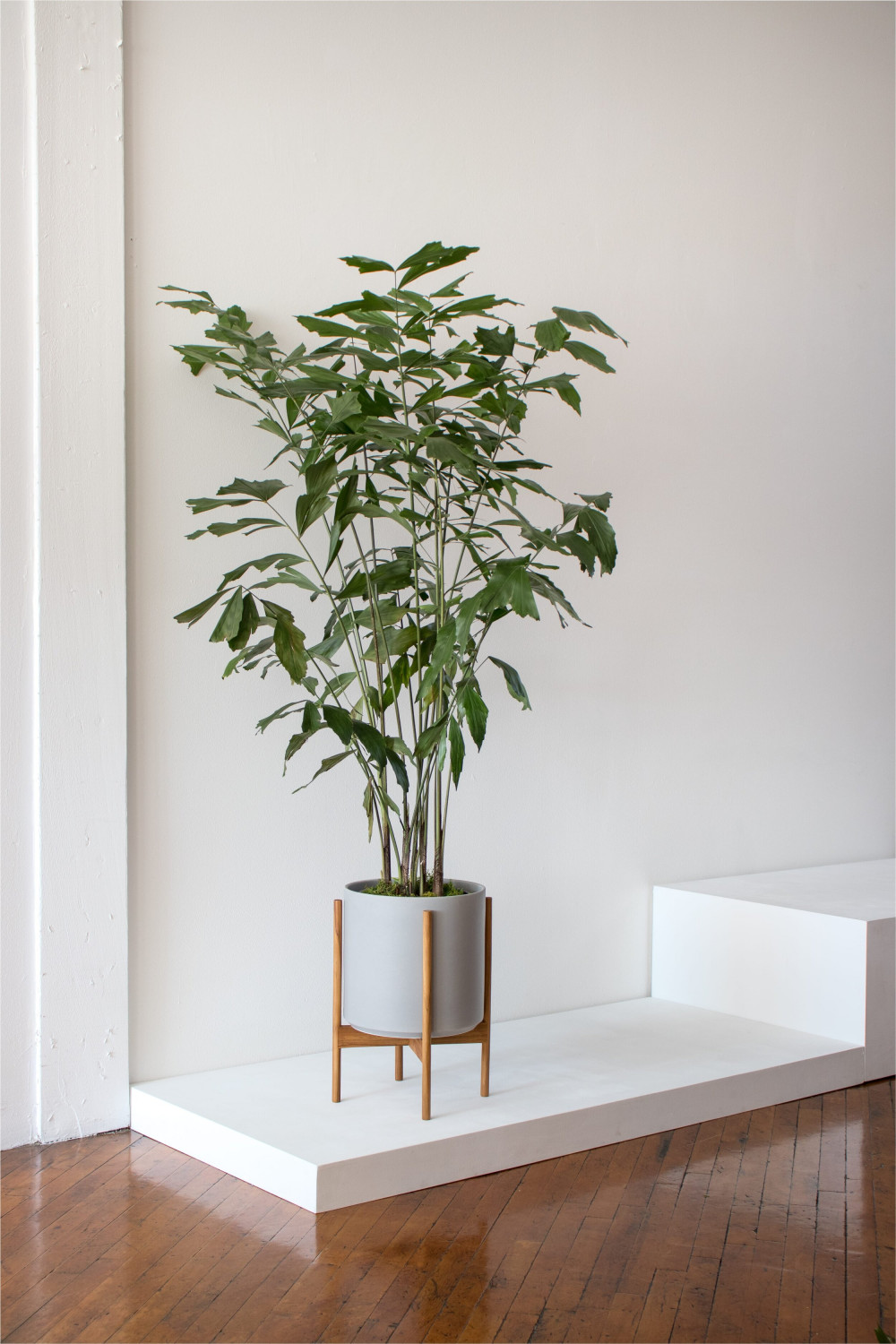 Source: La Résidence
Source: La Résidence
They are prized for their unique fronds and make stunning additions to landscapes in suitable climates. When grown indoors, they require space to accommodate their eventual size and are best suited for large, well-lit rooms or conservatories. Proper care and attention to their specific needs will help these palms thrive and flourish.
#23. Ponytail Palm (Beaucarnea Recurvata)
They are often grown as indoor houseplants because they are well-suited to container cultivation. They are particularly popular as bonsai specimens.
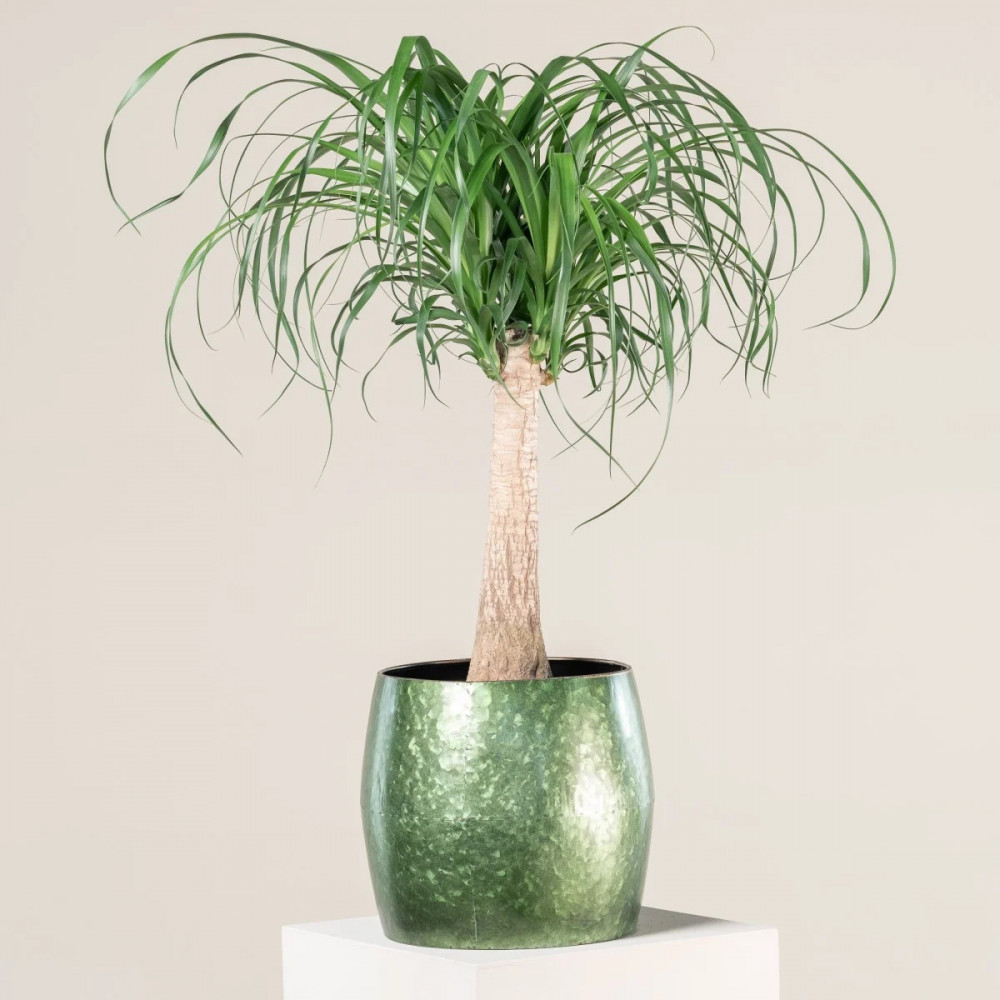 Source: The Palm Centre
Source: The Palm Centre
They thrive in average indoor temperatures and humidity levels. They can tolerate slightly cooler temperatures in the winter but should be protected from freezing.
